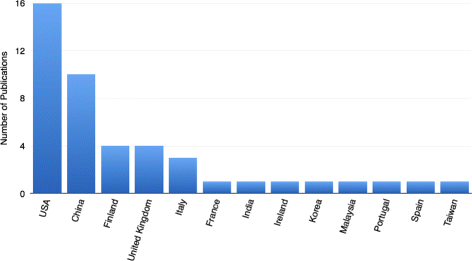A systematic review of data mining and machine learning for air pollution epidemiology
- PMID: 29179711
- PMCID: PMC5704396
- DOI: 10.1186/s12889-017-4914-3
A systematic review of data mining and machine learning for air pollution epidemiology
Abstract
Background: Data measuring airborne pollutants, public health and environmental factors are increasingly being stored and merged. These big datasets offer great potential, but also challenge traditional epidemiological methods. This has motivated the exploration of alternative methods to make predictions, find patterns and extract information. To this end, data mining and machine learning algorithms are increasingly being applied to air pollution epidemiology.
Methods: We conducted a systematic literature review on the application of data mining and machine learning methods in air pollution epidemiology. We carried out our search process in PubMed, the MEDLINE database and Google Scholar. Research articles applying data mining and machine learning methods to air pollution epidemiology were queried and reviewed.
Results: Our search queries resulted in 400 research articles. Our fine-grained analysis employed our inclusion/exclusion criteria to reduce the results to 47 articles, which we separate into three primary areas of interest: 1) source apportionment; 2) forecasting/prediction of air pollution/quality or exposure; and 3) generating hypotheses. Early applications had a preference for artificial neural networks. In more recent work, decision trees, support vector machines, k-means clustering and the APRIORI algorithm have been widely applied. Our survey shows that the majority of the research has been conducted in Europe, China and the USA, and that data mining is becoming an increasingly common tool in environmental health. For potential new directions, we have identified that deep learning and geo-spacial pattern mining are two burgeoning areas of data mining that have good potential for future applications in air pollution epidemiology.
Conclusions: We carried out a systematic review identifying the current trends, challenges and new directions to explore in the application of data mining methods to air pollution epidemiology. This work shows that data mining is increasingly being applied in air pollution epidemiology. The potential to support air pollution epidemiology continues to grow with advancements in data mining related to temporal and geo-spacial mining, and deep learning. This is further supported by new sensors and storage mediums that enable larger, better quality data. This suggests that many more fruitful applications can be expected in the future.
Keywords: Air pollution; Association mining; Big data; Data mining; Epidemiology; Exposure; Machine learning.
Conflict of interest statement
Ethics approval and consent to participate
Not applicable.
Consent for publication
Not applicable.
Competing interests
The authors declare that they have no competing interests.
Publisher’s Note
Springer Nature remains neutral with regard to jurisdictional claims in published maps and institutional affiliations.
Figures



References
-
- Domingos P. A few useful things to know about machine learning. Commun ACM. 2012;55(10):78–87. doi: 10.1145/2347736.2347755. - DOI
-
- Dietterich TG, et al. Ensemble methods in machine learning. Multiple Classif Syst. 2000;1857:1–15. doi: 10.1007/3-540-45014-9_1. - DOI
-
- Neto UMB, Dougherty ER. Error estimation for pattern recognition. Hoboken: John Wiley & Sons; 2015.
Publication types
MeSH terms
Grants and funding
LinkOut - more resources
Full Text Sources
Other Literature Sources
Medical

